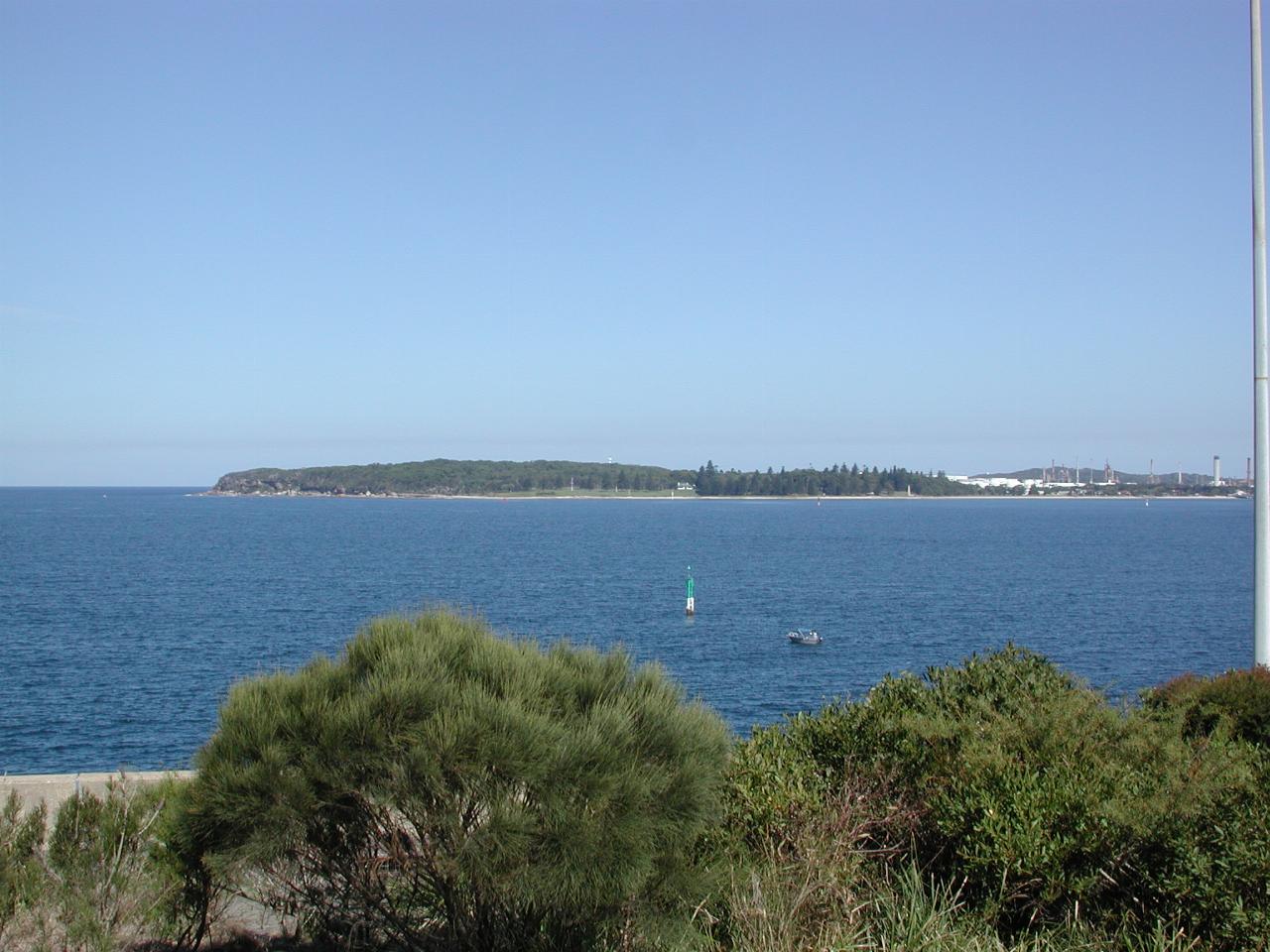
The eastern half of Australia was claimed for Britain by Captain James Cook in 1770 when he landed at Botany Bay, which is located a few kilometres south of Sydney Harbour. Cook observered the harbour entrance but did not investigate. When Britain started a settlement in Australia, the ships arrived in Botany Bay, but Captain Phillip decided that it was not a suitable place, and and began looking for a more sheltered location. Thus was discovered Sydney Harbour, a far more suitable place for founding a settlement and port.
Within days of Captain Phillip's arrival to start the settlement, the French Navigator The Comte de la Perouse arrived. He sailed to Australia from the Carmel Mission just south of Monterey, California. The expedition was not seen again after sailing from Botany Bay.

Looking south from Port Botany towards Kurnell, the southern side of Botany Bay, and the place where Captain Cook landed in 1770. The site where he landed is marked with a cairn and a monument, to be shown in later images. To the far right of the image is an oil refinery. The landing site is about one third of the way from the refinery to the ocean on the left. It is marked by an obelisk which is just visible in the larger image.
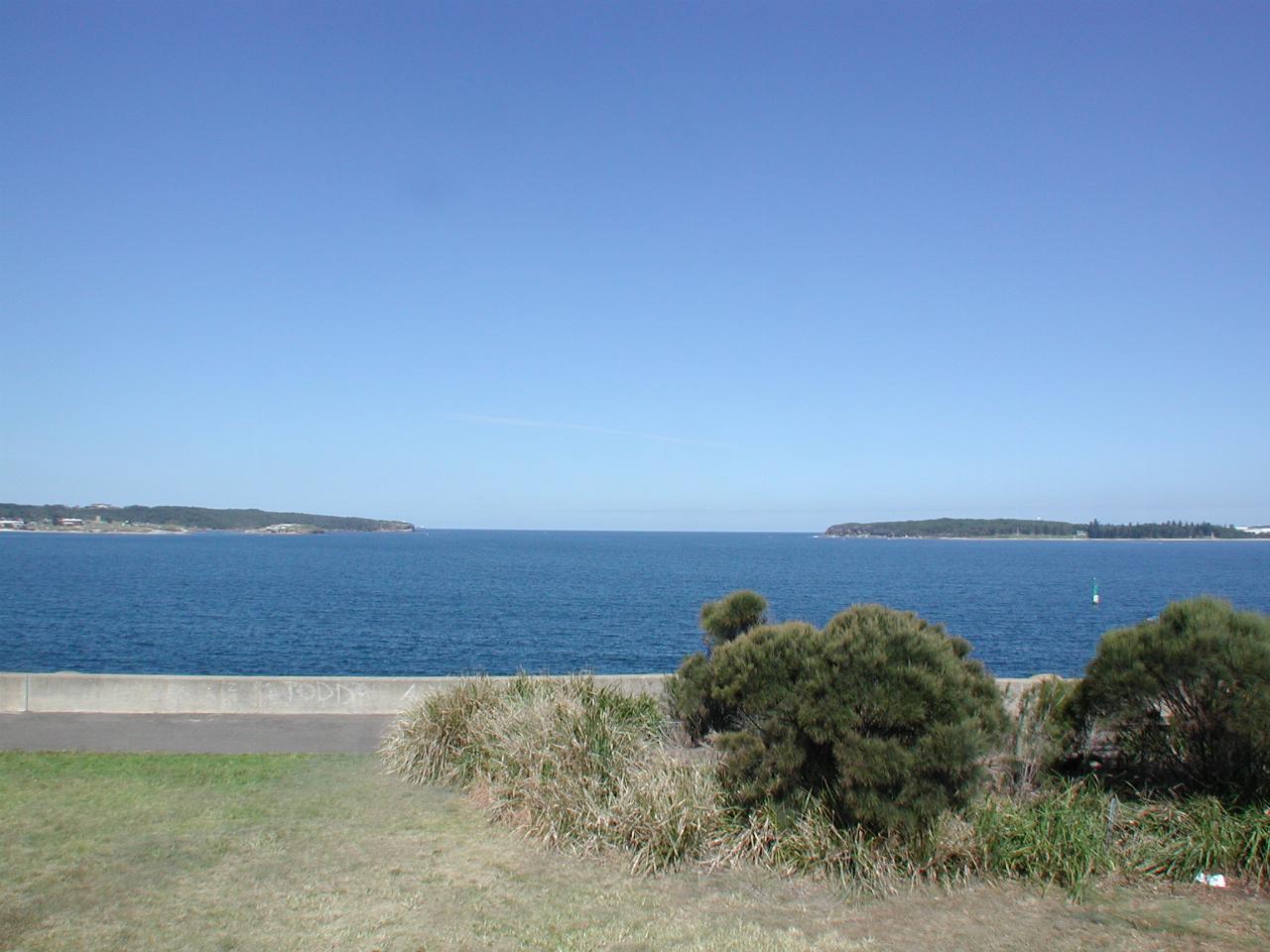
The view looking out the heads towards the Tasman Sea. The suburb of La Perouse is on the left side of the entrance.
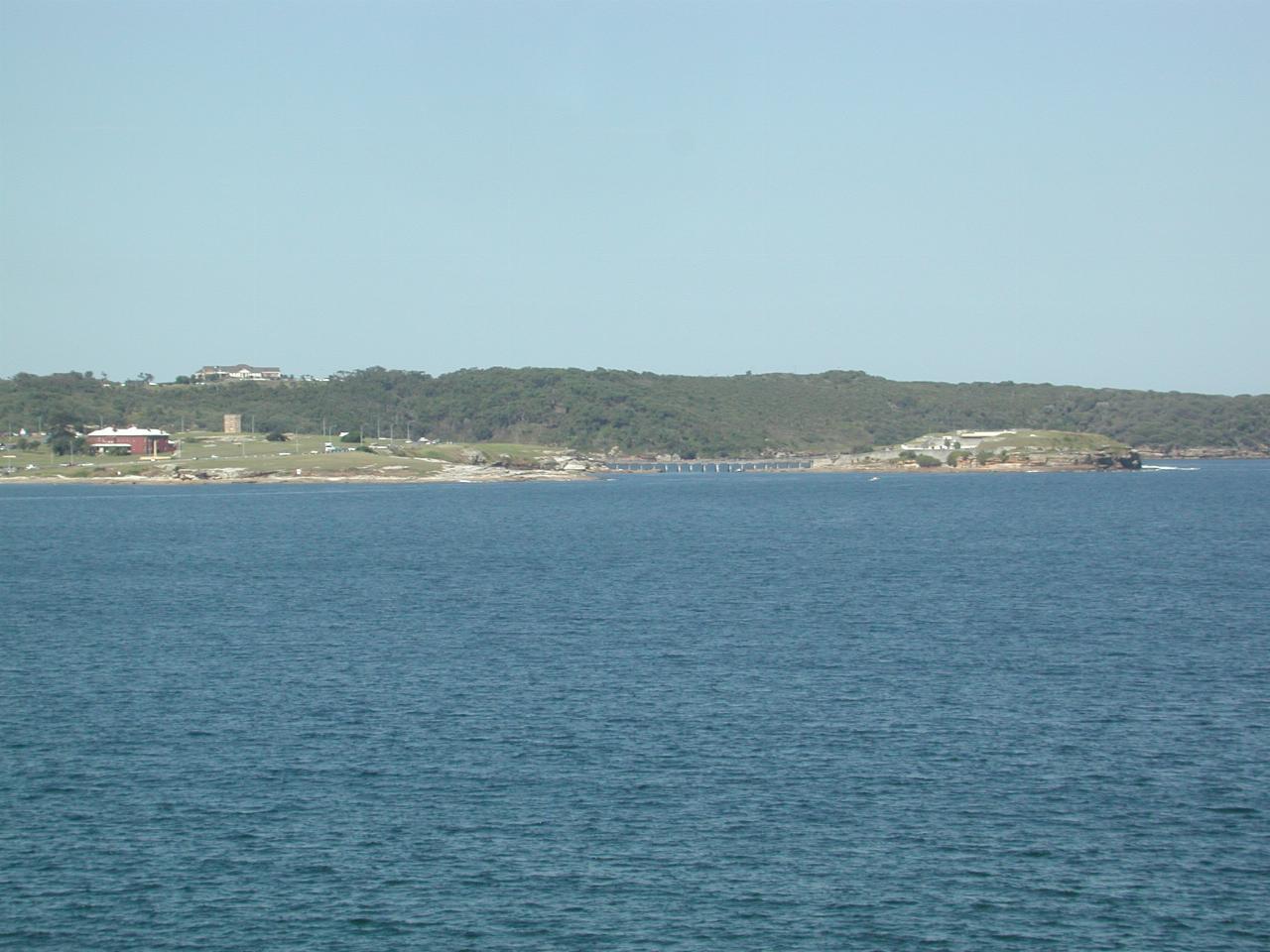
A closer view of La Perouse, showing St. Michael's Golf Club (top of the hill) and the Bare Island Fort (now a museum).
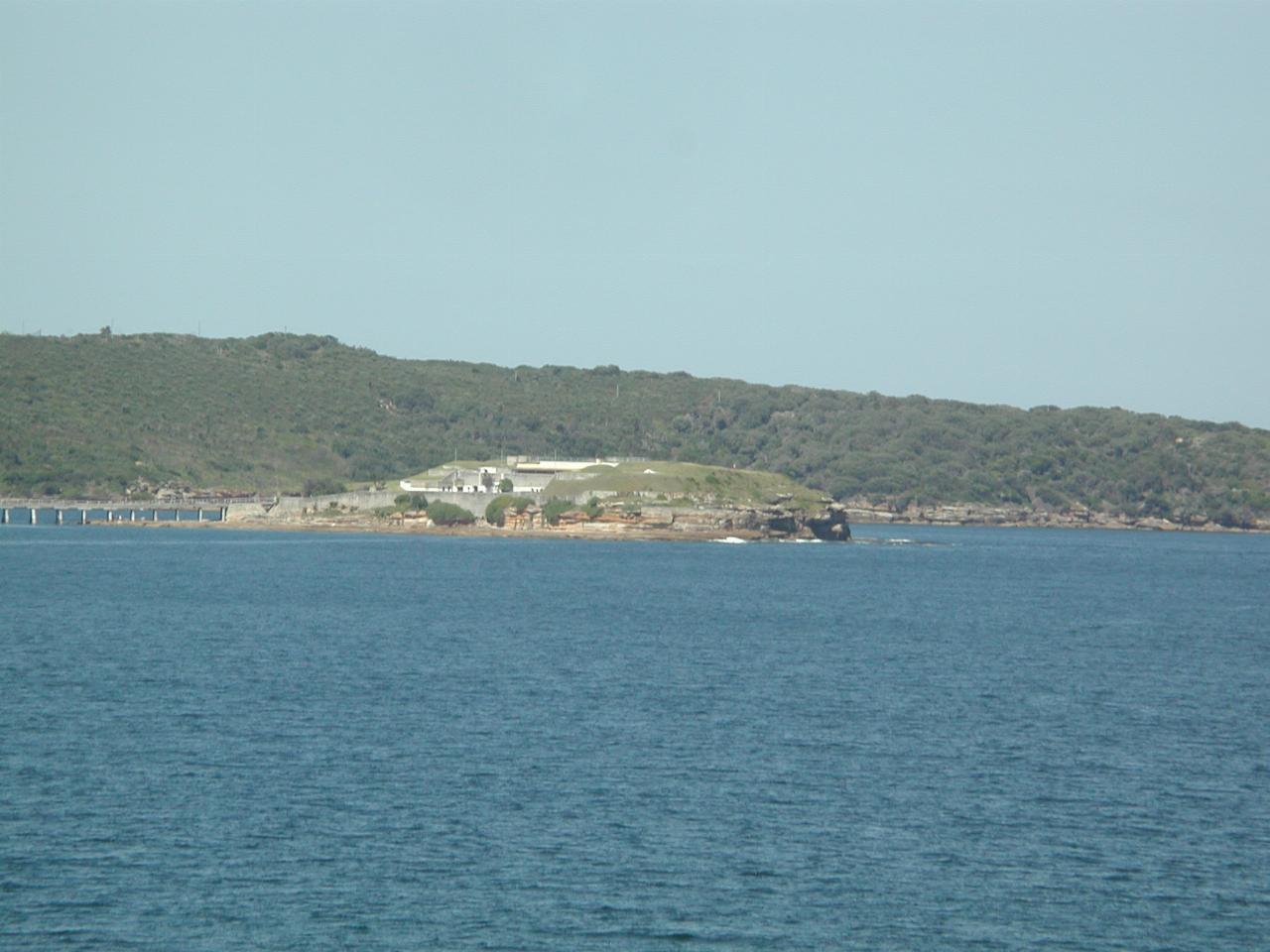
A close up of Bare Island. Obviously it was a prime defensive position in the days of black powder and cannon balls.
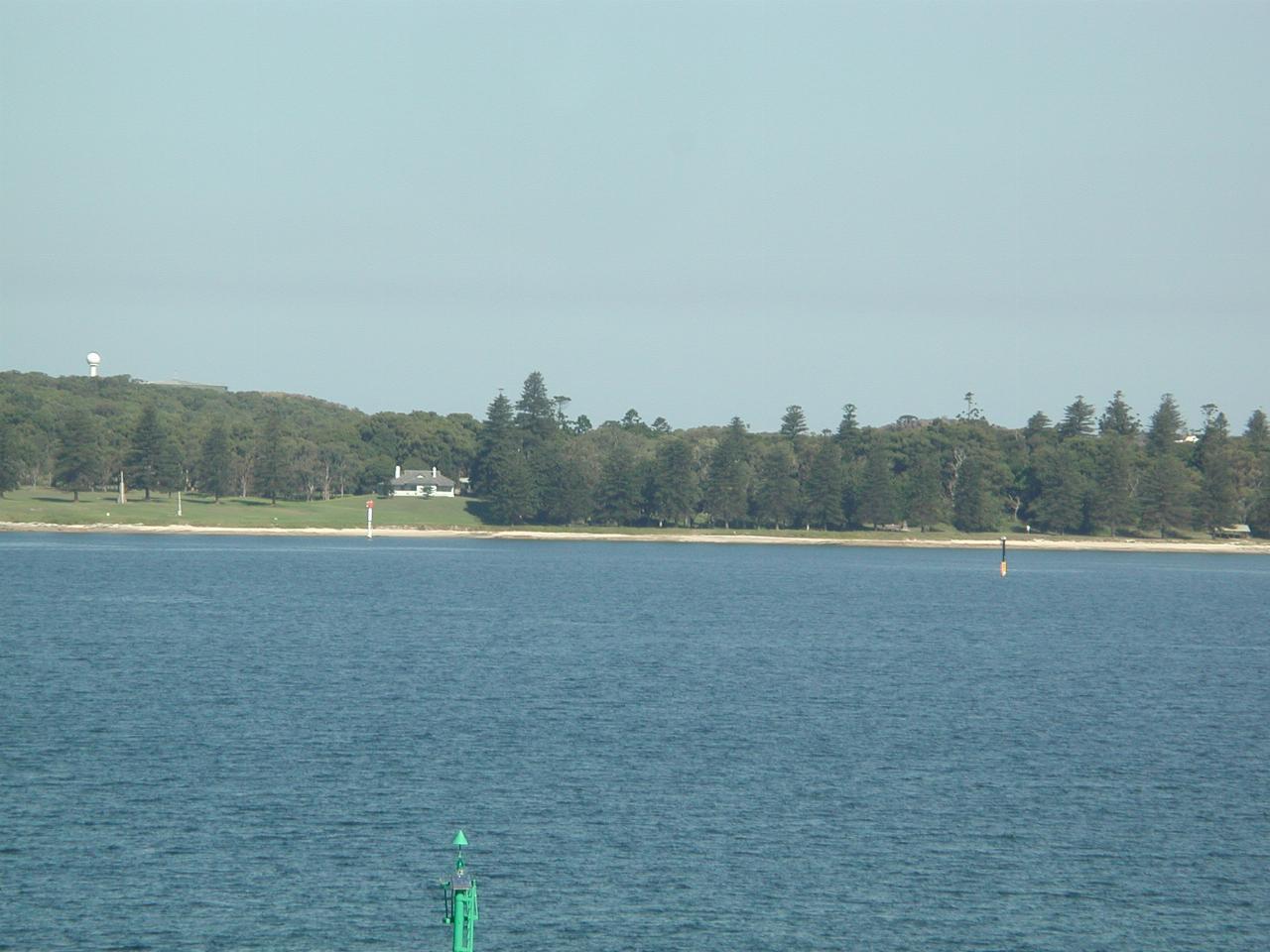
A close up view of part of Kurnell. Cook's landing site is off the right of this picture. There are two monuments, one to Daniel Solander (after whom the point is named), and a smaller one to Formby Sutherland, the first British subject to die in Australia, on May 1st, 1770. The tower on the left is an aircraft navigation aid.